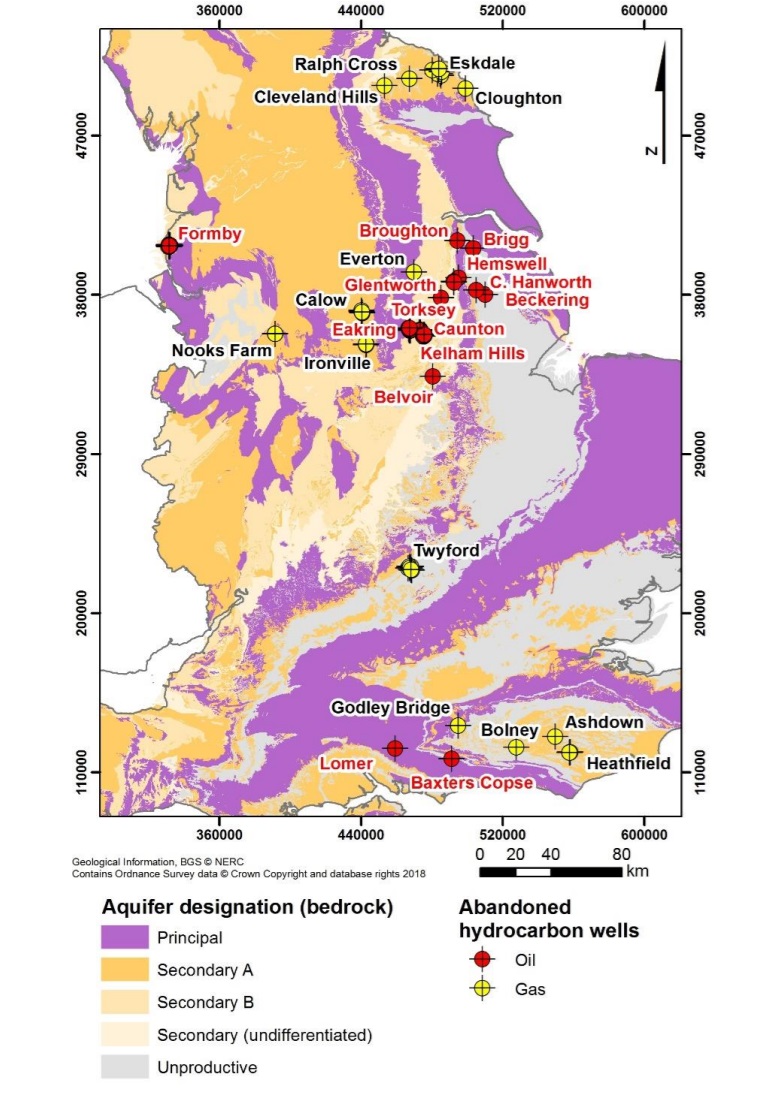BGS worked together with the Environment Agency (EA) to investigate whether any evidence exists for effects of abandoned hydrocarbon wells on groundwater quality in England. Over the period 2016 to 2017, we evaluated groundwater quality in shallow aquifers above selected sites where abandoned hydrocarbon wells are known to exist.

The location of selected abandoned fields. BGS © UKRI.
Background
In the UK, around 2000 hydrocarbon wells are recorded on Department for Business, Energy & Industrial Strategy (BEIS, now the Department for Energy Security and Net Zero) databases, including conventional oil and gas, mine gas and coal-bed methane wells. Of these, some 1500 are no longer active. The distribution of abandoned wells in England has been evaluated in relation to existence of overlying usable aquifers (as designated by the EA), in order to assess the potential for vulnerability to contamination from deep hydrocarbon sources.
Activities
We evaluated existing spatial and temporal data for groundwater quality (organic and inorganic chemistry) from the EA databases in areas with recorded, abandoned hydrocarbon wells. We also selected four sites for further water and soil-gas sampling and detailed investigation. The selected hydrocarbon wells are from a combination of conventional oil and gas fields and are overlain by varied aquifer types (Cretaceous chalk, Jurassic limestone, Carboniferous sandstone and Cretaceous sandstone).
Report
Bell, R A, Bearcock, J M, Bowes, M J, Milne, C J, Scheidegger, J M, White, D, Taylor, H, Lister, T R, Smedley, P L, and Ward, R S. 2018. Impacts on groundwater quality from abandoned hydrocarbon wells — final report. British Geological Survey Commissioned Report CR/18/061N. (Nottingham, UK: British Geological Survey.)
Contact
Please contact BGS Enquiries for more information or contact the Environment Agency National Customer Contact Centre (NCCC).

